Tennessee Field Diamonds
4
A treasure 485 million years in the
making.
|
Sevier Shale
Quartz crystals in the
Sevier Shale show that at least some
quartz deposition took place during or after the
Alleghenian Orogeny.
The
other geologic environment where quartz crystals occur is
the Sevier Shale. Here, they are also found in open
space within vugs, although again, there may have been
some soluble component, now gone, present when they
formed. Rock salt could have constituted such a matrix,
and again, anhydrite and gypsum are common in rocks at
depth, for example in East Tennessee’s zinc
mines. But again, if it was there, it would still
be present in the inclusions.
Seveir
Shale crystals tend to be simpler. There is rarely
evidence for more than one stage of growth, but there can
be soecimens composed of multiple parallel
crystals. The Sevier Shale was deposited after the
post-Knox unconformity, and all open space is the result
of later deformation (faulting and folding) that took
place during the Alleghanian orogenic episode.
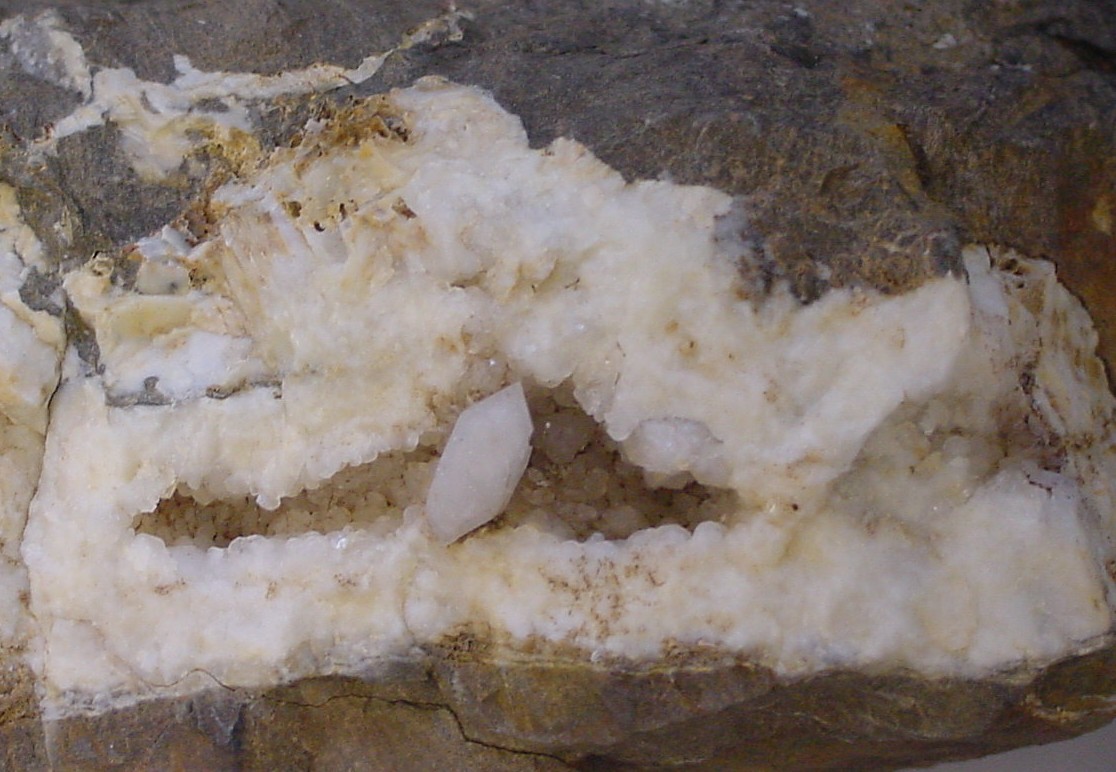
Dolomite and calcite-lined vug from the Sevier Shale.
Excavation along
Andrew Johnson Highway
(locality 13)
Crystals in vugs in sheared and deformed
shale bedrock
This fairly recent excavation into the Sevier Shale was
found while scouting near Mosheim for exposures. A
few crystals were noticed on the ground and traced to
vugs in the deformed bedrock.
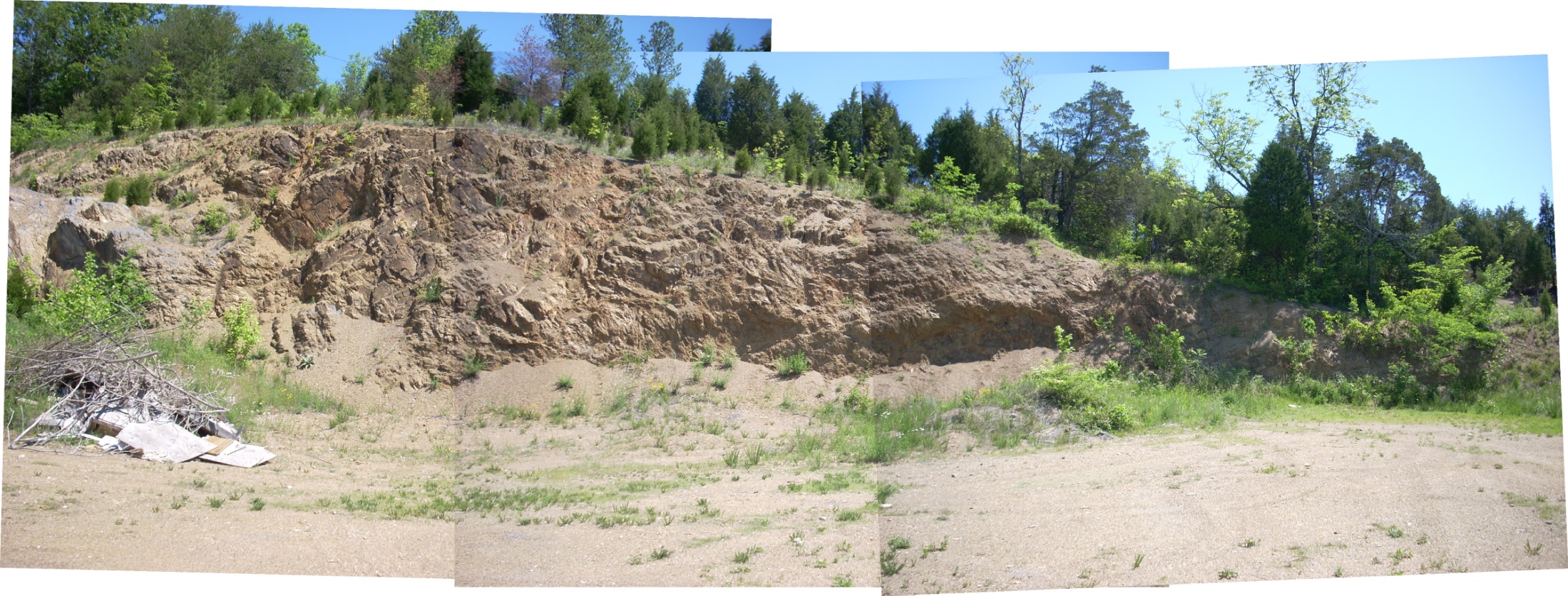
Stitched-together photos of theroadside excavation.

The exposure was then examined close-up with printouts of
the photos in hand, and the features plotted on the
photos.

Same, with photo background removed. The geology
was revealed as complexly deformed, as expected.

Colored "map" version.
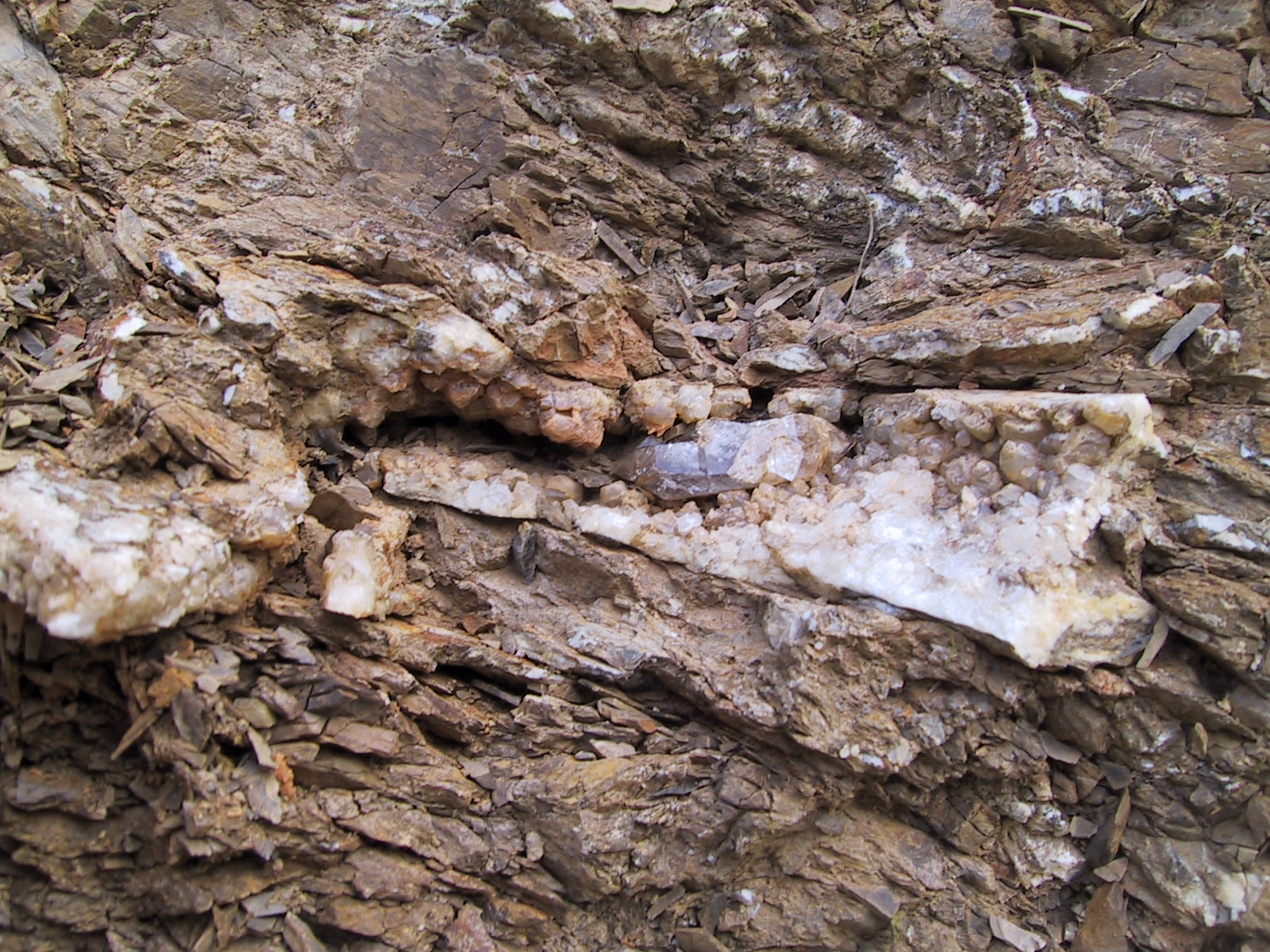
Calcite-filled vug with crystal. Doubly terminated
bipyramidal crystals were also found completely loose in
some vugs. This crystal was not “loose”
only because it had impinged on the cavity walls.
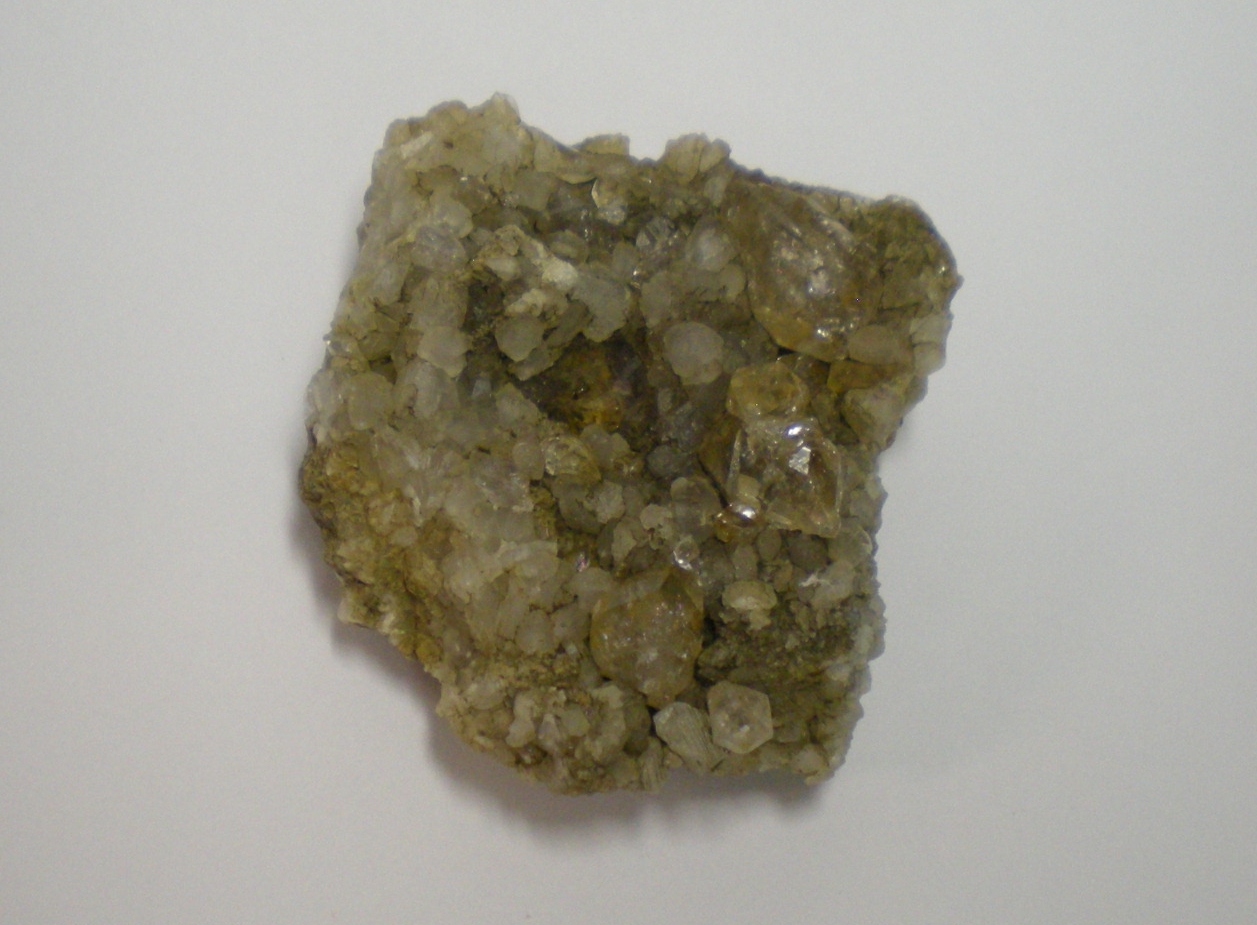
Very transparent quartz qrowing on calcite matrix.
The reflection is from an “s” face, which
allows one to determine the handedness of a crystal.
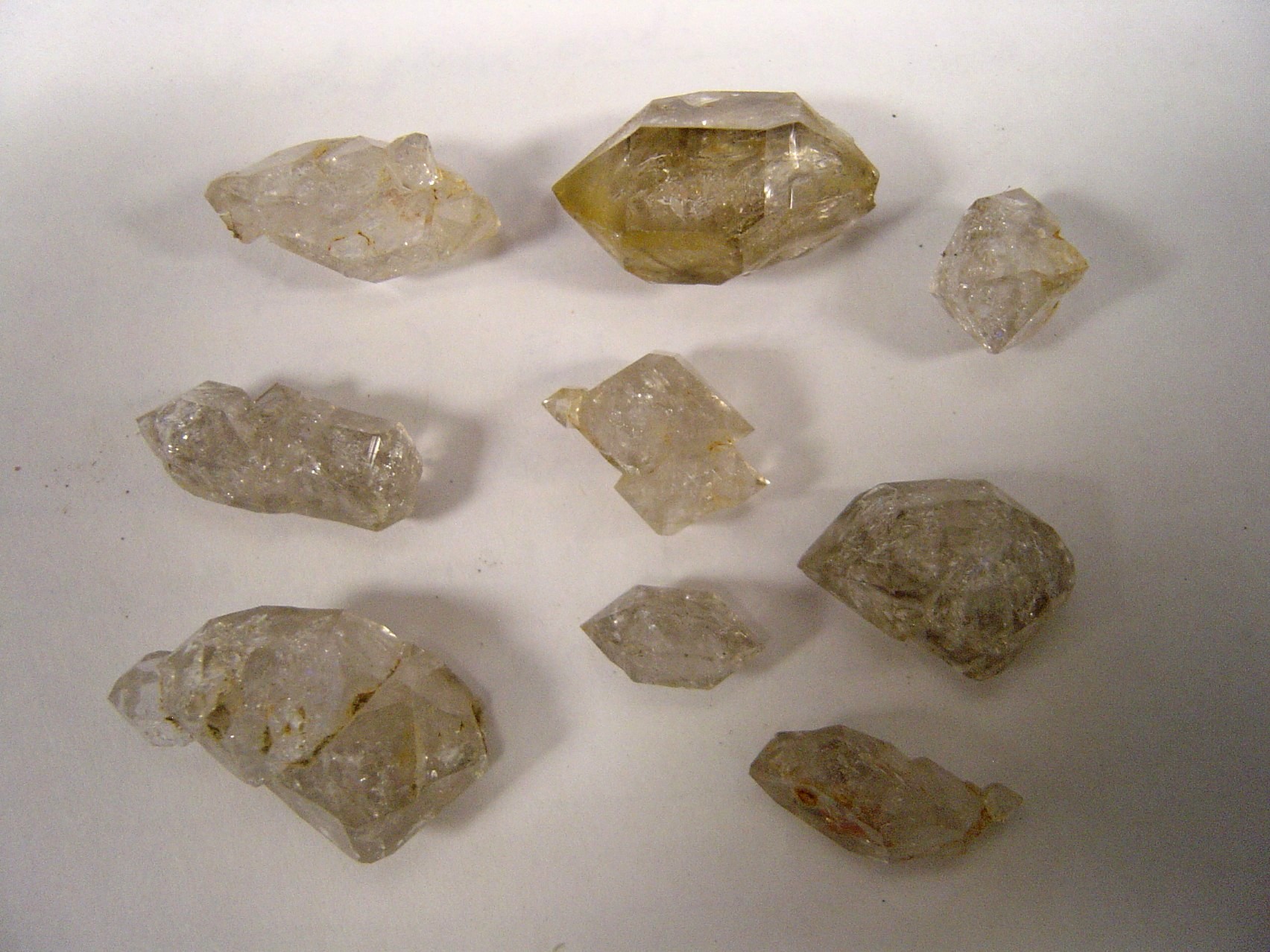
Typical crystals from this locality. Crystals with
"s" faces are occasionally encountered here,
but they are no where common.
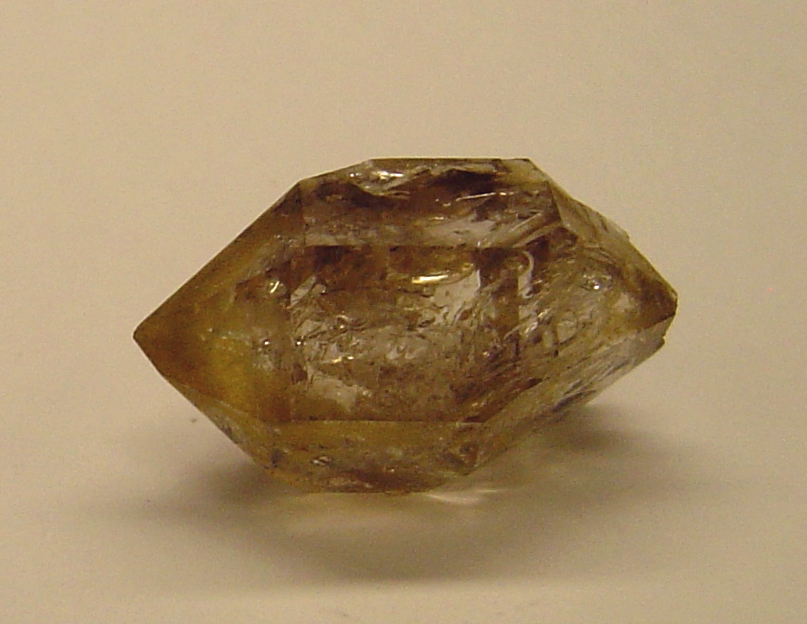
Well-formed “Herkimer” from this location.
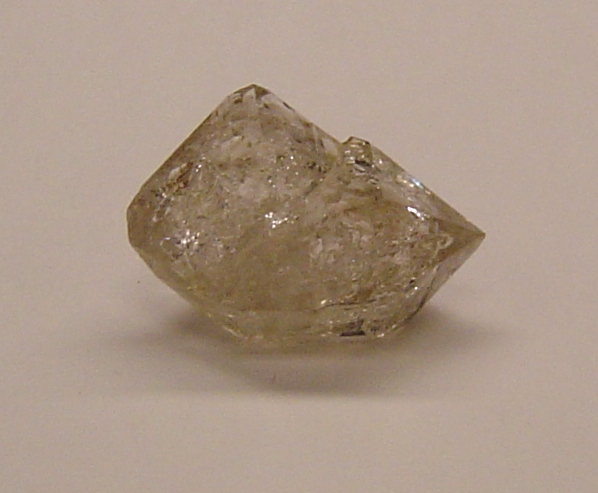
Another well-formed “Herkimer” from this
location.
Muddy Creek arm of
Douglas Lake
(locality 6)
Many fresh crystals of
local origin plus a few slightly water-worn and
otherwise abraided
Muddy Creek arm of Douglas Lake is a well-known
locality where crystals can be found on the surface in
crumbled Sevier Shale, and in soils derived from that
formation.
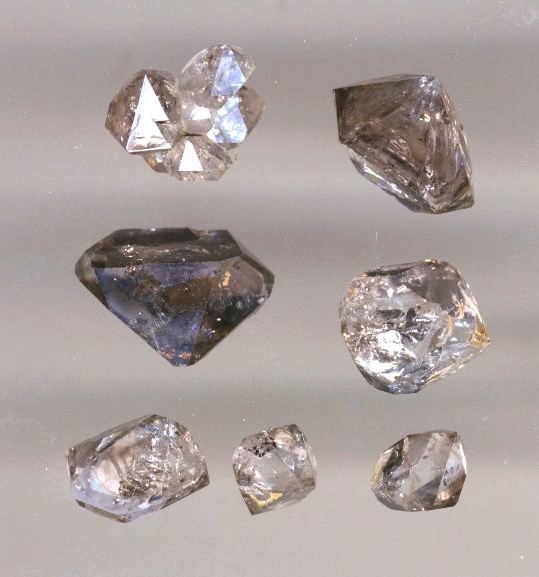
Some of the typical crystals from Muddy Creek. Many
have clouds or "veils" of microscopic dark
inclusions, which make them look like smoky quartz.
Note that almost all of them are bipyramids. There
are few hexagonal prisms, and none of the
“scepter” forms where bipyramidal is deposited
over prismatic quartz.
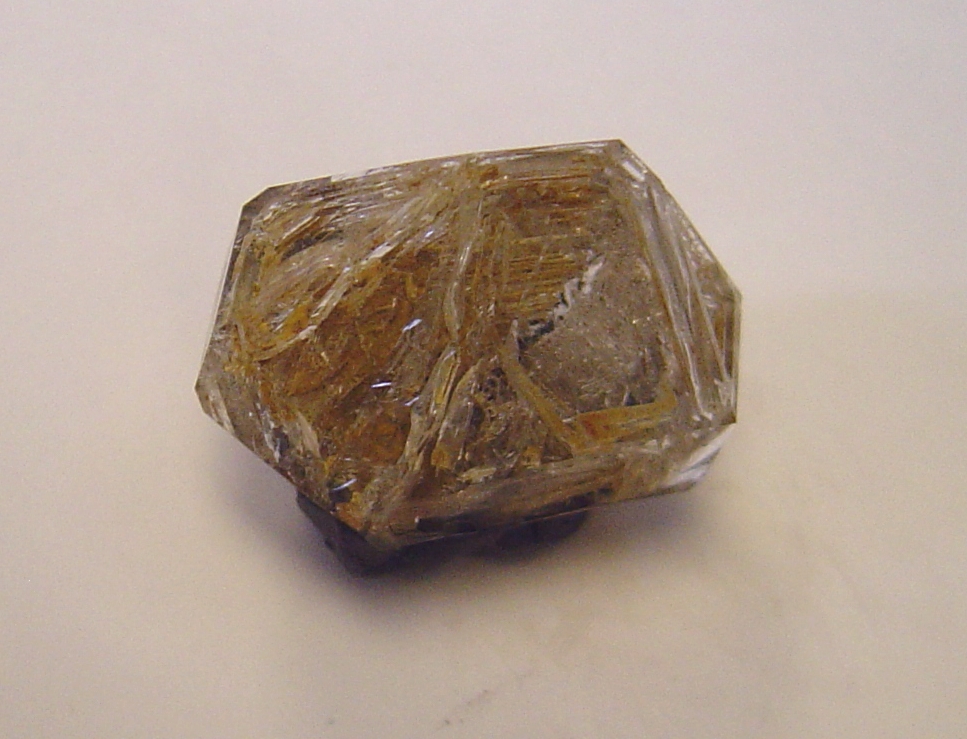
Mud inclusion crystal. The mud inclusions are deep
embayments defined by partially overgrown septa.
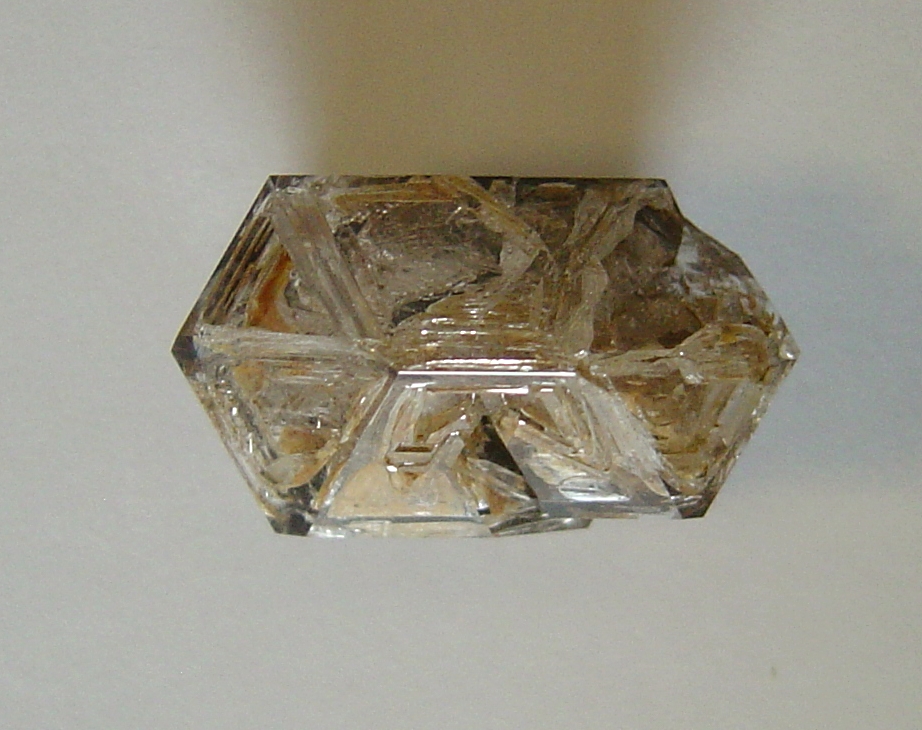
The same crystal looking down the “c”
axis. The mud inclusions are deep embayments
defined by partially overgrown septa.
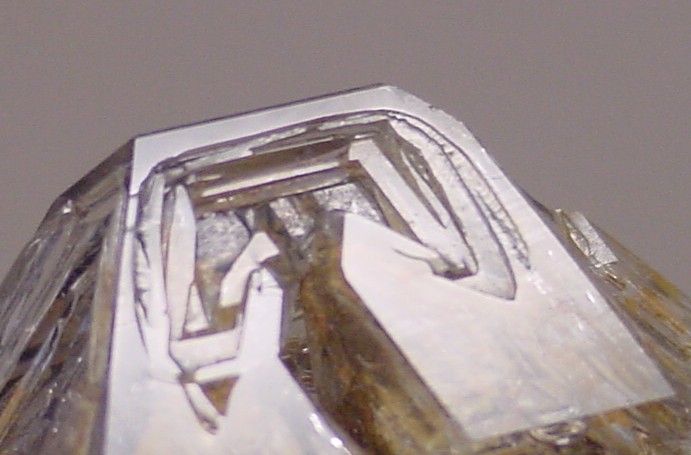
Detail of above. The margins of the septa are
growth surfaces, not broken surfaces.
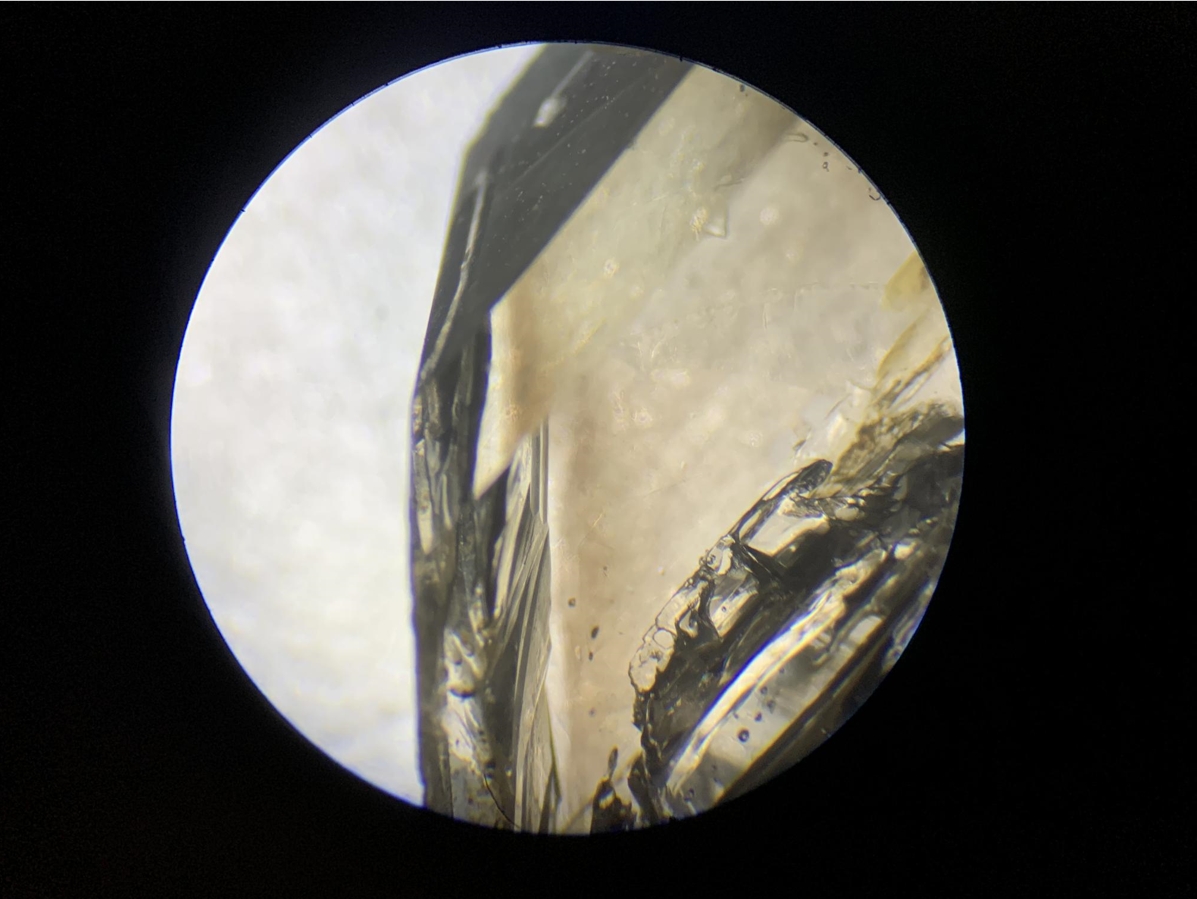
"Smoky" zones are common in crystals from Muddy
Creek.
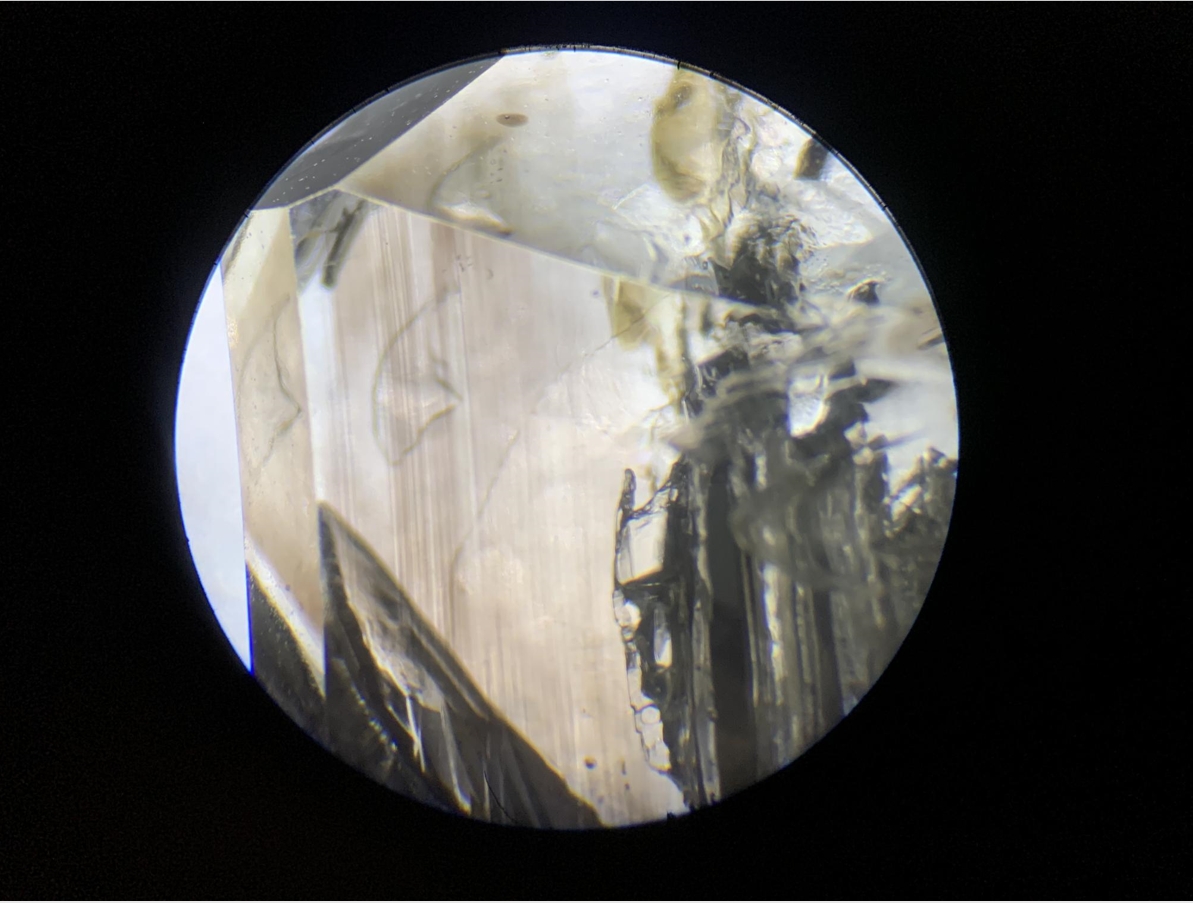
These resolve to fine lamellae parallel to the
rhombohedral faces when viewed at just the right angle..

Diamond Creek
(locality 9)
All crystals
found at Diamond Creek show evidence of transport.
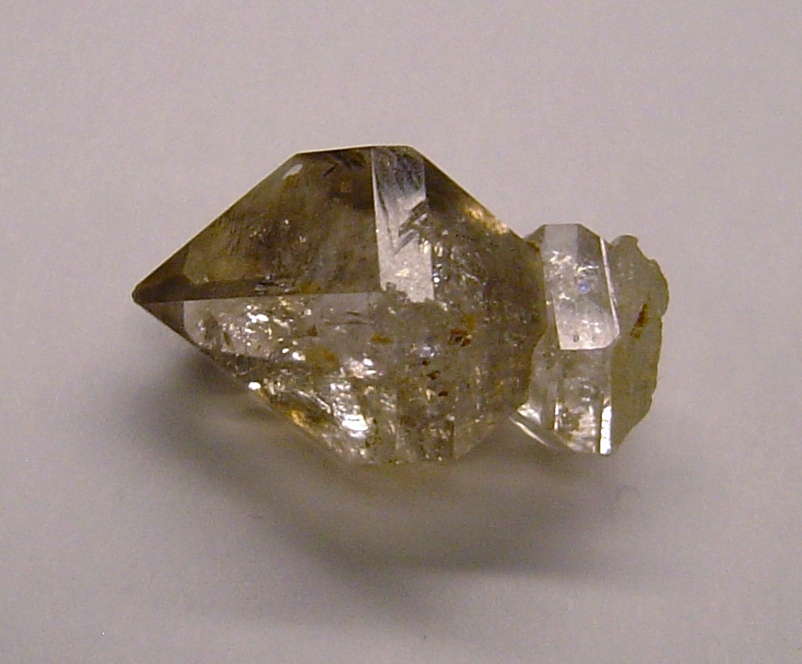
Diamond Creek has a variety of forms, and is
unusual in the number of distorted-appearing or
“squashed” crystal shapes. The spot is
also different in that almost all the crystals occur with
gravels that have been transported by the creek and show
at least some chips on the points and edges.
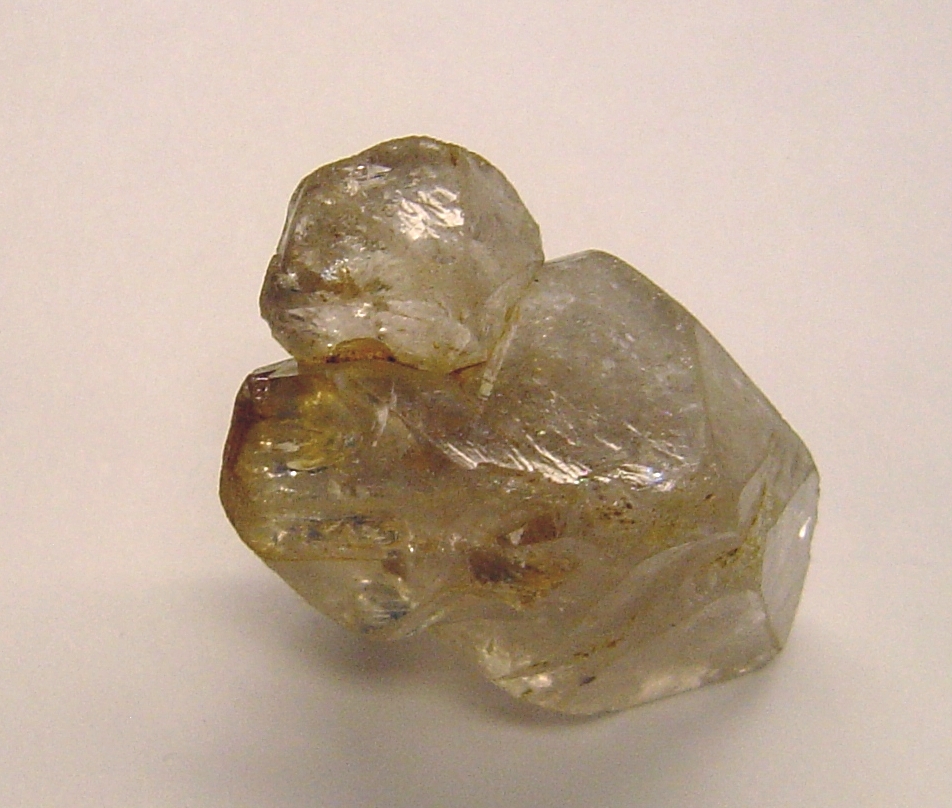
Large complex bipyramidal crystal.
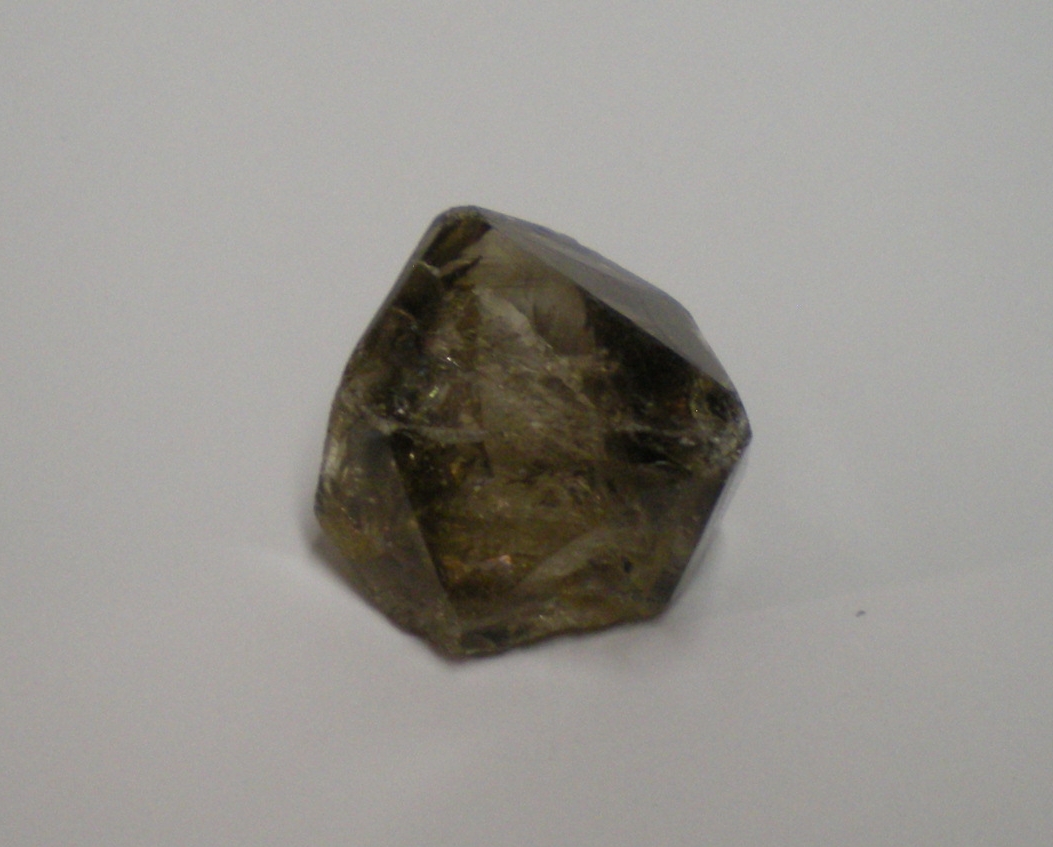
Large smoky crystal, bipyramidal habit.
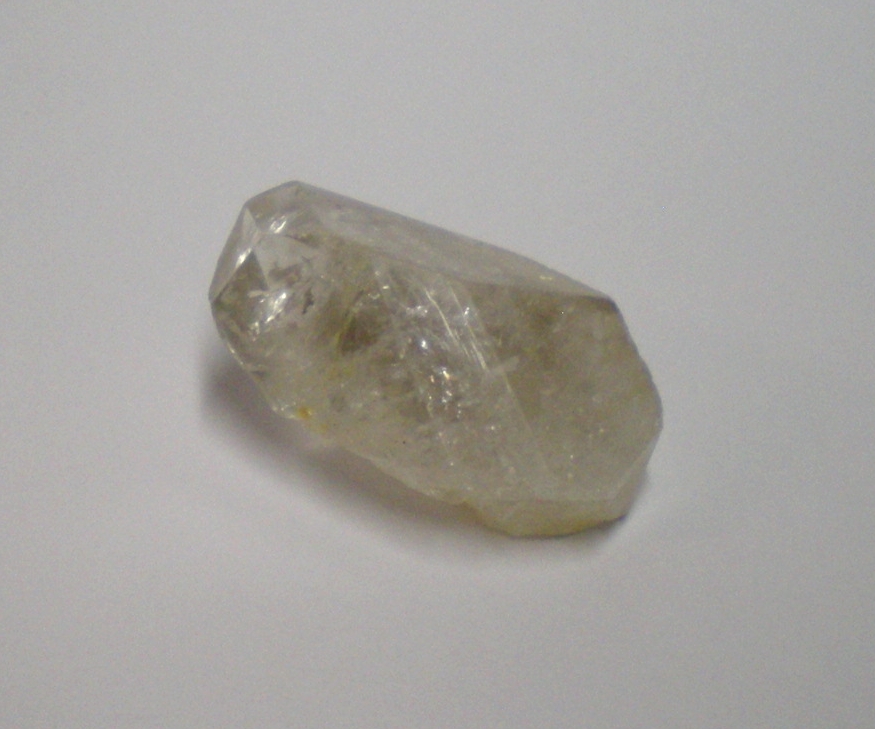
"Deformed" shape. Front face is an
“m” prismatic face, with the “c” axis
going from lower left to upper right.
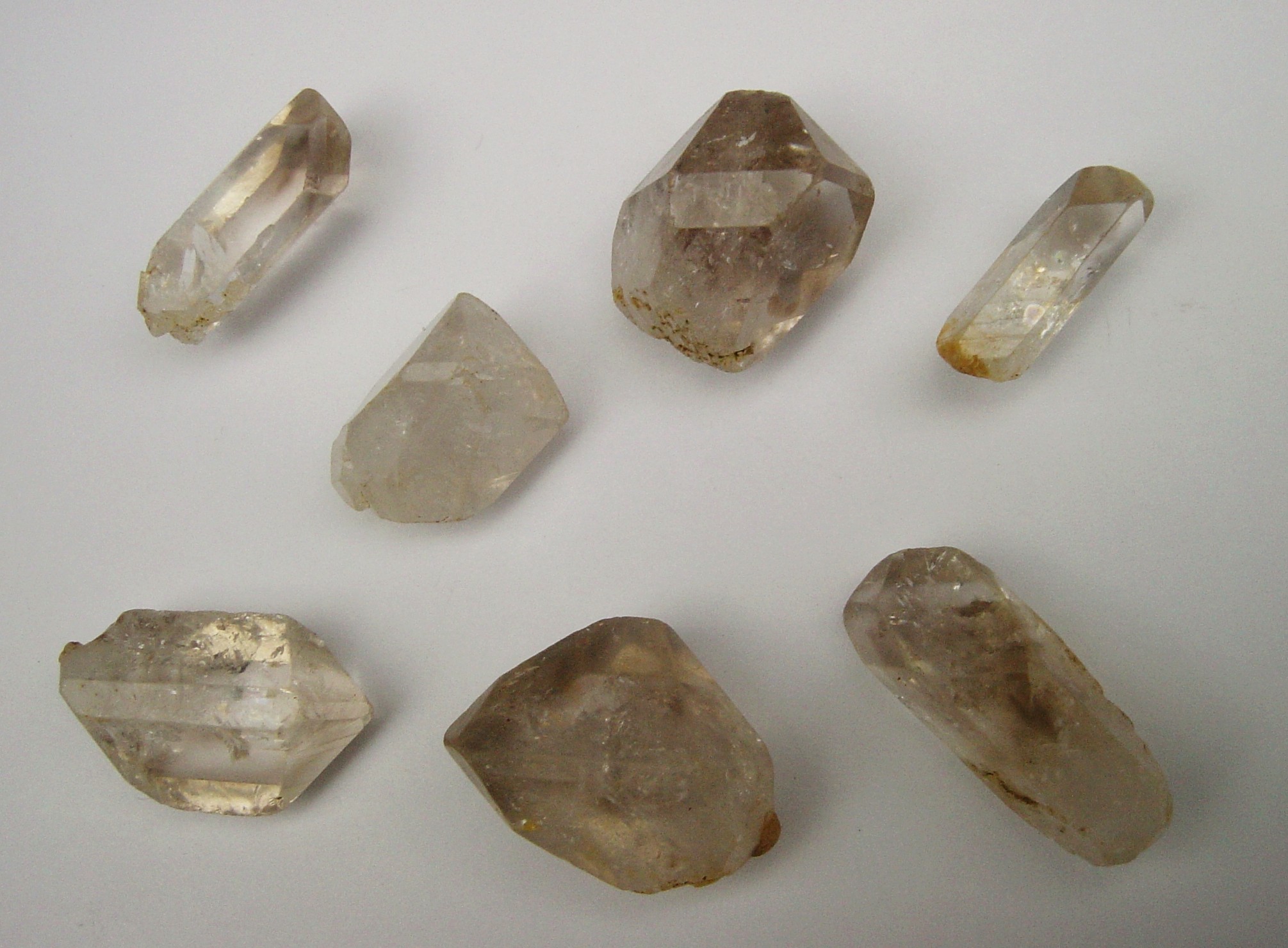
Distorted crystals, all oriented with the “c”
axis vertical.
NEXT
Crystals near
Walland
(Locality 4)
Contorted
and sheared Sevier Shale.
Quartz_crystals_5.htm
Index
|





















